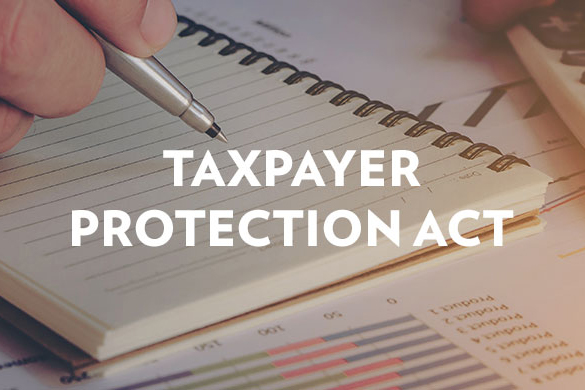Fact Sheet

Five Taxpayer Protection Act Facts Every Pennsylvanian Should Know
According to the Tax Foundation, Pennsylvania’s state and local tax burden averages $4,589 per person, which equals 10.2 percent of total income earned throughout the state. This onerous tax burden—driven by an unsustainable spending trend—reduces take-home pay, hinders job creation, and undermines state government’s finances.
House Bill 110, also known as the Taxpayer Protection Act (TPA), would amend Pennsylvania’s constitution to limit spending increases to the combined rate of inflation and population growth over a three year period. Overriding this limit would require a three-fourths vote of the General Assembly. The state House approved HB 110 in December. It now awaits action in the Senate.
Fact: Unchecked spending has damaged Pennsylvania's economy.
- Total spending, adjusted for inflation, has increased by more than $16,400 per family of four since 1970.
- Despite rapid spending growth, Pennsylvania ranks 49th in job growth, 48th in population growth, and 44th in personal income growth over this same period.
- Since 2007, Pennsylvania has ranked first in economic development spending, yet slow economic growth persists.
- An analysis of the five highest-and lowest-tax states found those states with a lower tax burden saw faster income and employment growth over the last 10 years than states with a higher tax burden.
Fact: The TPA slows the rate of spending growth.
- The TPA does not mandate cuts to government spending. It slows the growth of spending by tying increases to the rate of inflation and population growth.
- For example, under the TPA formula, lawmakers could increase spending in the 2018-19 budget by $422 million.
- If the TPA had been enacted in FY 2003-04, spending could have increased by $8 billion through FY 2017-18. Instead, it climbed by more than $10.1 billion.
Fact: Spending restraint drove income and job growth in Colorado.
- In 1992, Colorado passed the Taxpayer Bill of Rights (TABOR), which used a formula to implement tax and spending limits. The law successfully slowed spending and improved the economy.
- In 1992, Colorado’s tax burden was 10.1 percent of state residents’ income. By 2012, the state’s tax burden fell to 8.9 percent of total income.
- From 1992-2007, Colorado’s personal income and population rose faster than the national average. Median household income in Colorado rose by 88.2 percent compared to the national average of 64 percent. Population grew by 37.4 percent compared to the national average of 17.4 percent.
- Colorado’s economy performed better in the decade after the passage of TABOR than in the decade prior to TABOR’s adoption.
- Job growth doubled. In the 10 years preceding TABOR, 212,000 new jobs were created. In the 10 years following TABOR, more than 500,000 new jobs were created.
- Before TABOR, Colorado’s job growth and economic output were at or below average. In the decade after TABOR, both exceeded the national average.
- Despite TABOR’s success, opponents have blamed the reform for budget challenges in the early 2000s. In reality, TABOR made the state’s finances more manageable.
- The challenges were the result of an economic recession, a devastating drought, government mandates, and state lawmakers’ failure to bring expenditures in line with revenue.
- According to an analysis by the Tax Foundation, Colorado’s budget deficit in FY 2002 would have been nearly six times larger without TABOR.
Fact: The state constitution does not limit spending growth.
- The Pennsylvania Constitution requires a balanced budget, yet the last two budgets were unbalanced and failed to protect working people from tax increases.
- This lack of fiscal restraint led to a credit rating downgrade last September. S&P Global Ratings lowered the commonwealth's general obligation rating to “A+”—its lowest point in 39 years.
- If the TPA had been applied to the General Fund from FY 2003-04 through FY 2017-18, a cumulative $32.4 billion—or more than $10,000 per family of four—would have remained in the hands of taxpayers rather than state government.
Fact: By large majorities, Pennsylvania voters want spending limits.
- A 2015 poll found nearly two-thirds of voters (64 percent) favor limiting the growth of state government. Support is bipartisan and consistent.
- 71 percent of Republicans, 62 percent of Democrats, and 59 percent of Independents support state spending limits.
- When similar questions about state spending limits were asked on five separate occasions (2005, 2008, 2010, 2012, 2014), support ranged from 59 percent to 70 percent of all voters.